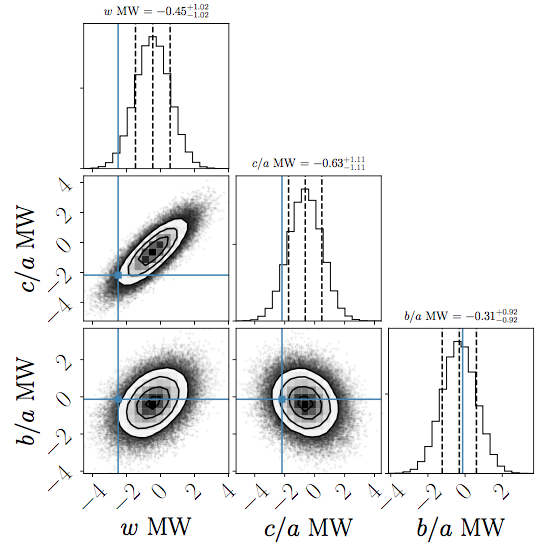Local Group Satellites Alignment
February 2018 »
Abstract:
We use numerical simulations to build an explicit probability distribution for the asphericity in the satellite distribution around galaxies similar to the Local Group (LG) in the Lambda Cold Dark Matter (LCDM) paradigm. This allows us to estimate the atipicallity of the satellite distributions in the LG even when the underlying simulations do not have enough systems that fully resemble the LG. We demonstrate the method using three different simulations: Illustris-1, Illustris-1-Dark and ELVIS. Detailed results differ among the simulations suggesting a strong influence of the typical Dark Matter (DM) halo mass in the LG samples. However, there are three common trends. First, at most of 2% the pairs are expected to have satellite distributions with the same asphericity as the LG; second, between 27% to 56% of the pairs have a halo with a satellite distribution as aspherical as in M31; and third, at most 3% of the pairs have a satellite distribution as planar as in the MW. The brightest satellites in the M31 galaxy have a rather typical distribution in the LCDM context, while the MW distribution is atypical in this respect. These quantitative results place the LG at the level of a 3sigma outlier in the LCDM paradigm. We suggest that understanding the reasons for this atipicality will require quantifying the asphericity probability distribution as a function of halo mass and large scale environment. The approach presented here can facilitate that kind study and other comparisons between different numerical setups and choices to study satellites around LG pairs in simulations.
Authors:
- Veronica Arias
VIEW ON ARXIV